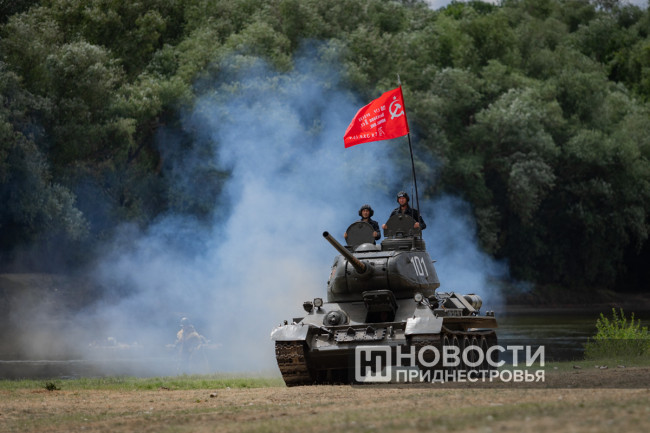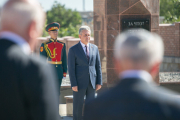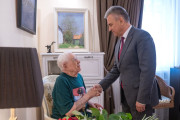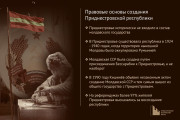Society
The cost of freedom. The meanings of historical reconstruction of the Great Patriotic War events
In Pridnestrovie, they reminded of the sacrifice of the Soviet people who defeated fascism
21 Jun., 2025, 22:10
Tiraspol, June 21. /Novosti Pridnestrovya/. June 22 is one of the important memorial days in Pridnestrovie, as well as in other countries of the former Soviet Union. On this day, people come to the Eternal Flame at the Glory Memorials in the cities and villages of the country. Before dawn, they light candles and watch the flame flicker on the granite slabs with the names of thousands of dead Soviet soldiers. The fire is reflected in the eyes, intertwined with memories of grandfathers and great-grandfathers who, when asked to tell about the war, turned away so as not to shed tears. They went through the most destructive war in history, won the war against fascism - a monstrous ideology of dividing people into "masters" and "defective". This victory came at a high price - 27 million dead, of whom only 8.7 million died in battle. If we honored the memory of each of them with one minute of silence, then humanity would have to remain silent for 38 years! The dawn of June 22 is coming, people at the memorials look from the candles to the brightening sky. This is how they thank those who gave their lives for the lives of future generations.
We must carefully preserve the memory of the Great Patriotic War, so that the sacrifice of the Soviet people was not in vain and the horrors of fascism do not happen again. Many books have been written about it, and many films have been made. Reconstructions of events have become a form of transmitting historical information - detailed productions that restore episodes of the war in real time. They convey the nerve of events, allow us to feel the moments of the battle, realize the horror of war and through emotion come closer to understanding the feat of Soviet soldiers. Historical reconstruction cannot be called a method of learning history - it is rather a way of feeling the past.
Such a historical reconstruction was held in Tiraspol on the eve of the 84th anniversary of the beginning of the Great Patriotic War. The OGRF servicemen and activists of the patriotic movement Heirs of Victory did their best – more than 300 people, horse-drawn carriages, a T-34-85 tank, a Katyusha multiple launch rocket system, armored vehicles, motorcycles, mortars and artillery pieces were involved in organizing the performance.
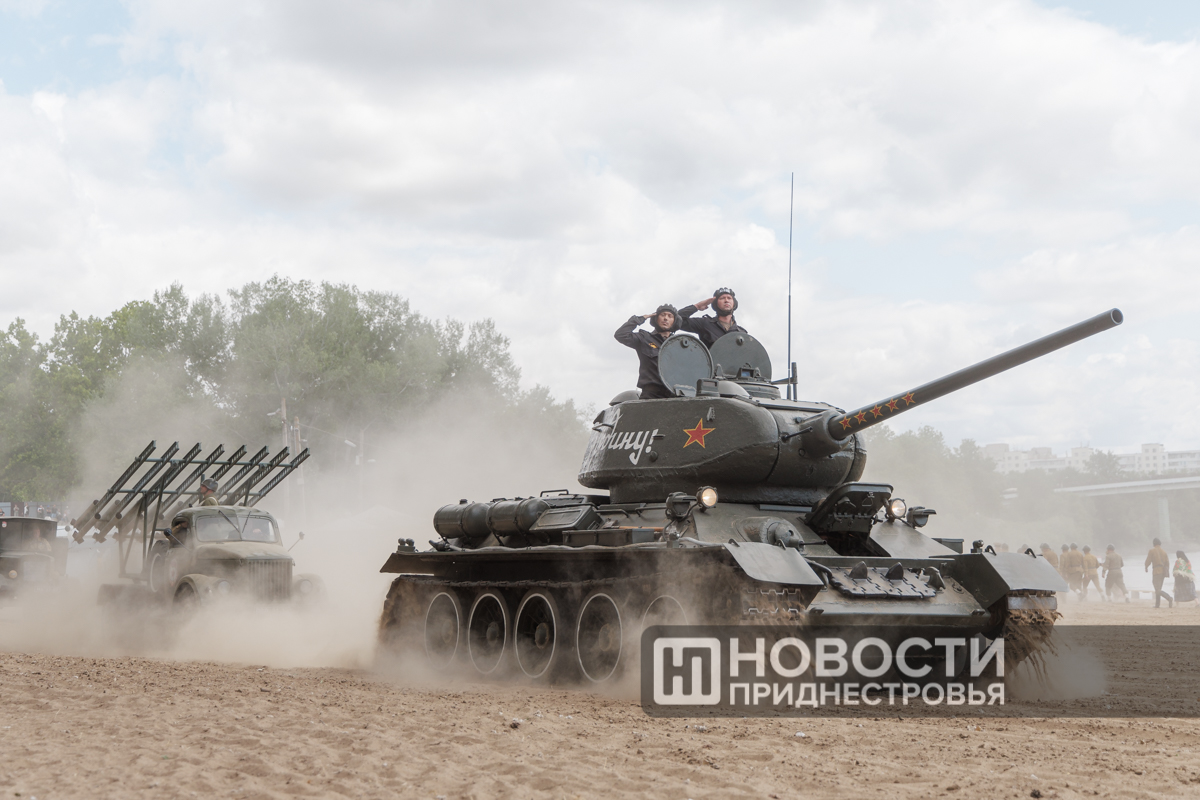
Cadets, pupils of Suvorov Military College, young army members took part in the reconstruction – it was especially exciting for them. They chose traditional location – on the city beach in Tiraspol. Here, by the Dniester river, there is open terrain, convenient infrastructure and landscape, allowing to demonstrate several tactical actions, for example, a forced march, taking positions, crossing the river.
From early morning, the reconstruction participants took up their positions according to a repeatedly rehearsed scenario. Military equipment and transport vehicles from the times of the Great Patriotic War resembled troops ready for battle before a carefully designed operation.
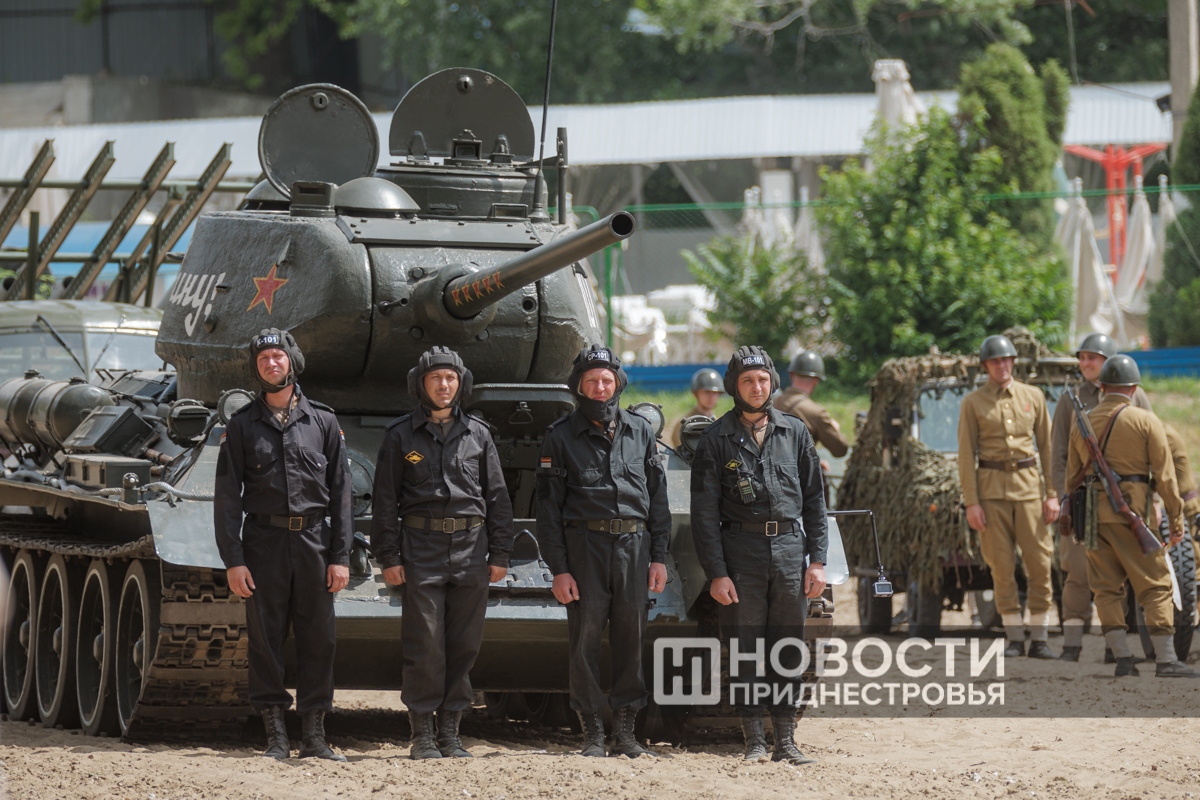
People came early to the city beach – cloudy weather and a fresh summer breeze were conducive to walks. Moreover, there was something to see: an exhibition of weapons from different eras, a master class in fencing with a Cossack saber, a presentation of retro cars and OGRF field kitchen created the appropriate atmosphere.
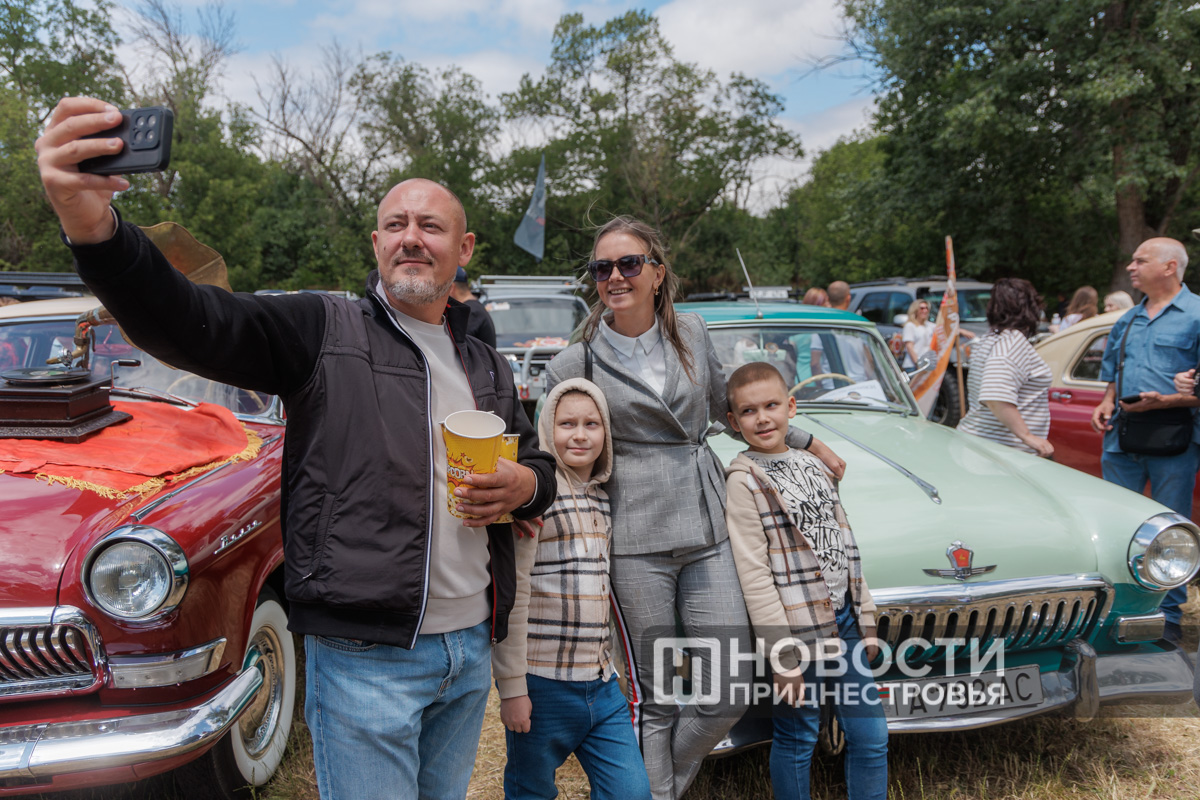
By 11 o'clock the beach was packed with spectators. All the stands and viewing areas were occupied, while people kept coming.
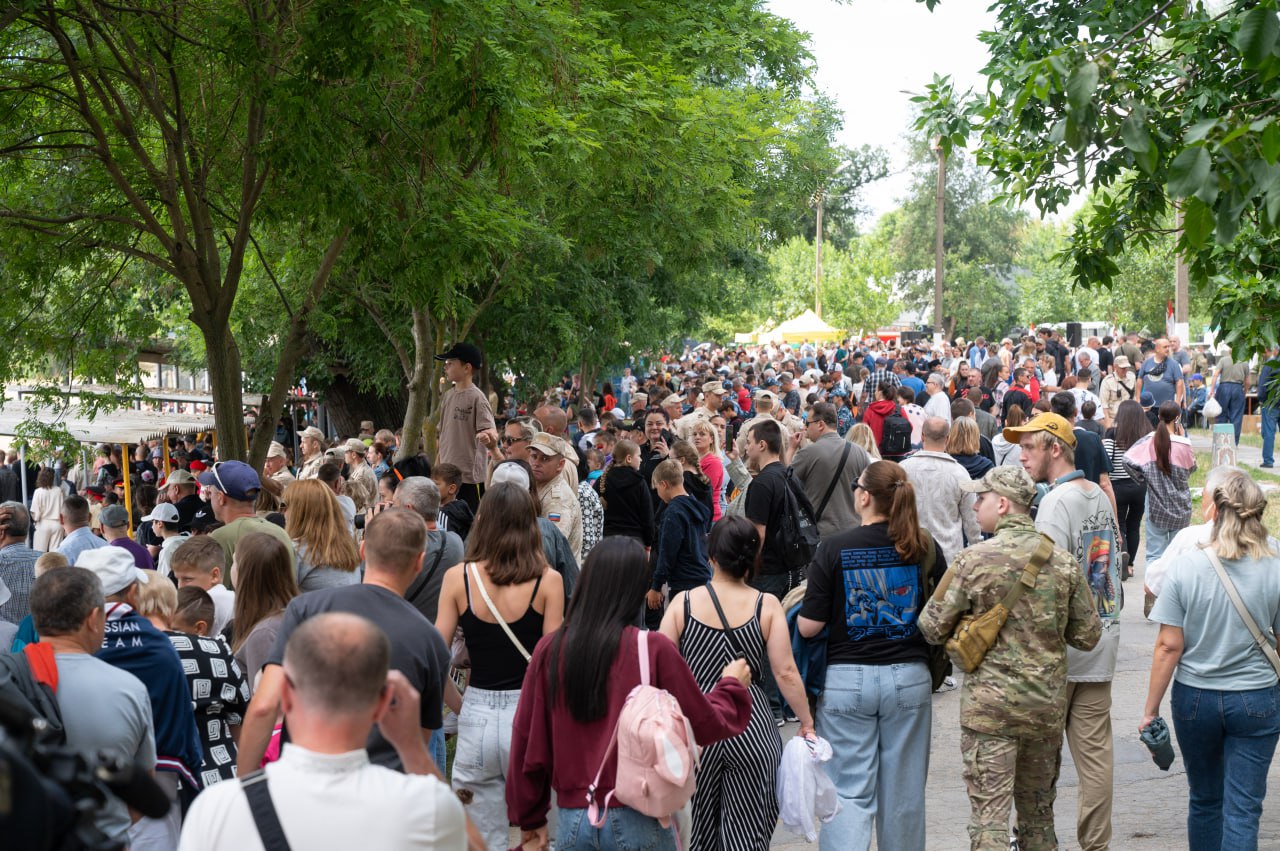
The authors of the performance prepared a story about some of the significant events of the Pridnestrovian territory`s liberation from the fascist occupation. The main idea of the reconstruction was not so much the detailing of events as the transmission of meaning in the language of visualization and empathy. The main message was that the sacrifice and feat of the Soviet people who defeated fascism should not be forgotten. It is no coincidence that the prologue to the beginning of the production was the words from the poem by Robert Rozhdestvensky "Remember":
"As long as hearts are beating, do remember! At what price was happiness won, please, remember!"
These words were carried in a deep recitative over the river, rushed through the treetops with the wind, settled in the hearts of hundreds of spectators, and were reflected on the participants` faces, frozen in anticipation of the command. The announcer's velvety voice recalled the beginning of the Great Patriotic War early in the morning of June 22, 1941, the incredible losses of the Soviet Union, those 27 million lives given for the peace and freedom of future generations. "If you were to place all the dead, murdered, tortured in camps and forced labor in one memorial cemetery, this cemetery would be the size of France," the voice said.
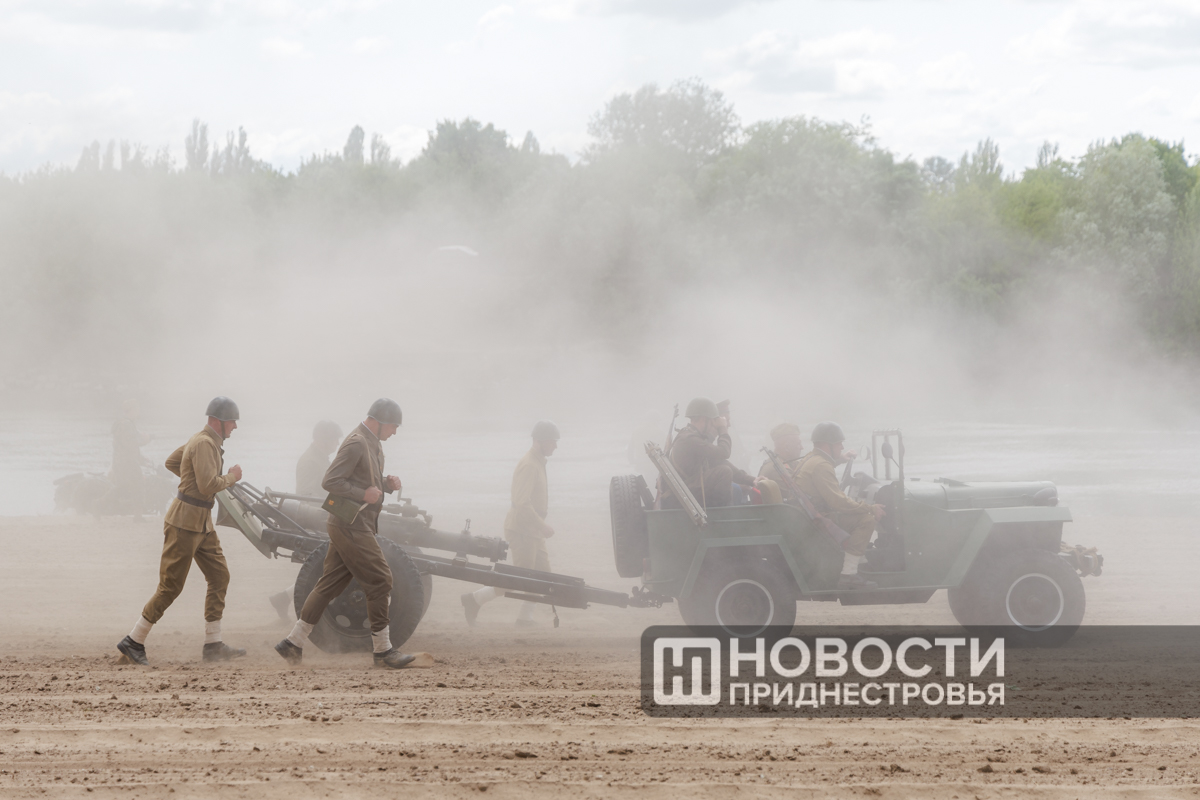
He spoke about the most difficult battles – Stalingrad and Kursk battles, the victory in which allowed the Red Army to turn the tide of the war and begin the liberation of the occupied Soviet territories, as well as Europe captured by the Nazis. He spoke about the liberation of Pridnestrovie – the entire Dniester valley was cleared of occupation in 6 months as a result of three frontline operations: Uman-Botoşani, Odessa, and Jassy-Chisinau operations. The events of the spring of liberation and the summer of 1944 became the subject of reconstruction.
The performance was organized so that the audience could hear every command – they were transmitted through the sound system. The announcer spoke about what was happening on the improvised battlefield.
“Tank, let`s go! Artillery, let`s go!” – the command sounded, and a column of military equipment, accompanied by Soviet infantry, moved to their positions. This is how preparations for the Jassy-Chisinau operation were demonstrated.
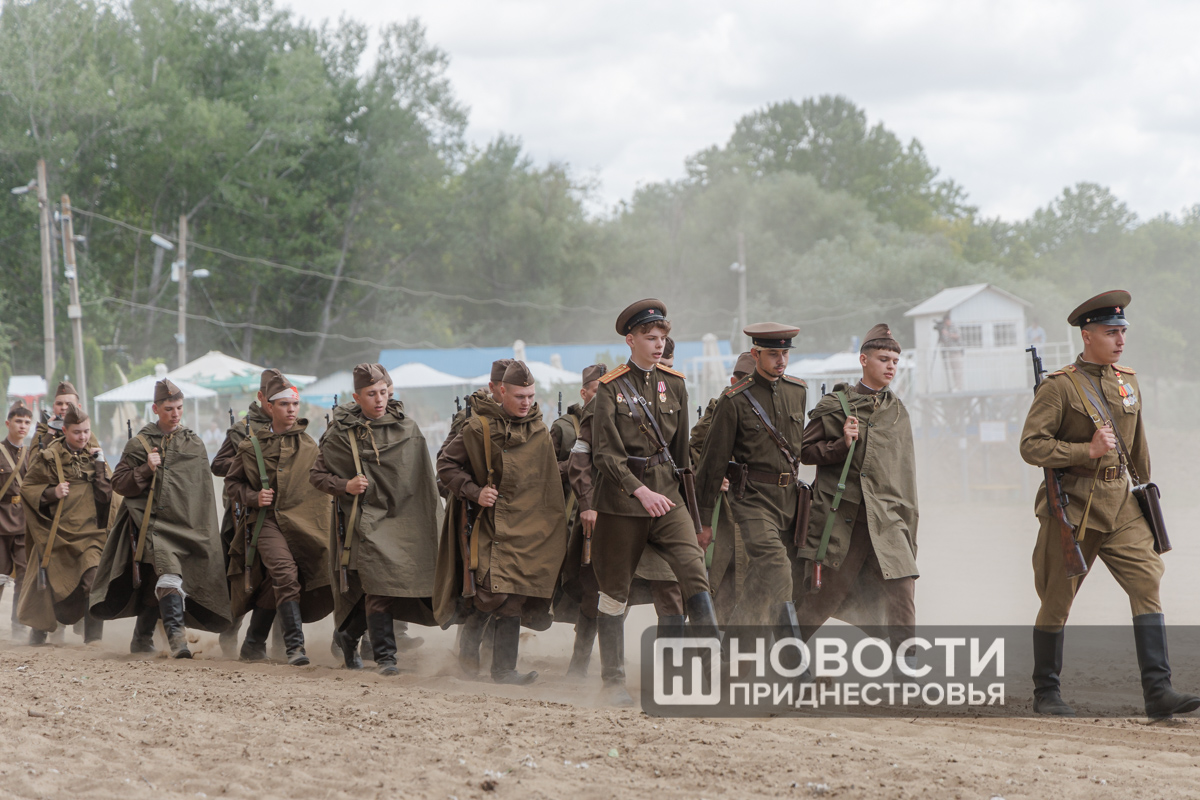
In the first episode, they could see how the troops were preparing for an attack and how the artillery was deployed. It was not by chance that it was called the God of war, because it was the powerful artillery preparation, which lasted for several hours, that often ensured the success of the battle. The reenactors used mortars and guns of later times - the originals used during the Great Patriotic War have long been unusable and can be exhibited as museum exhibits at best.
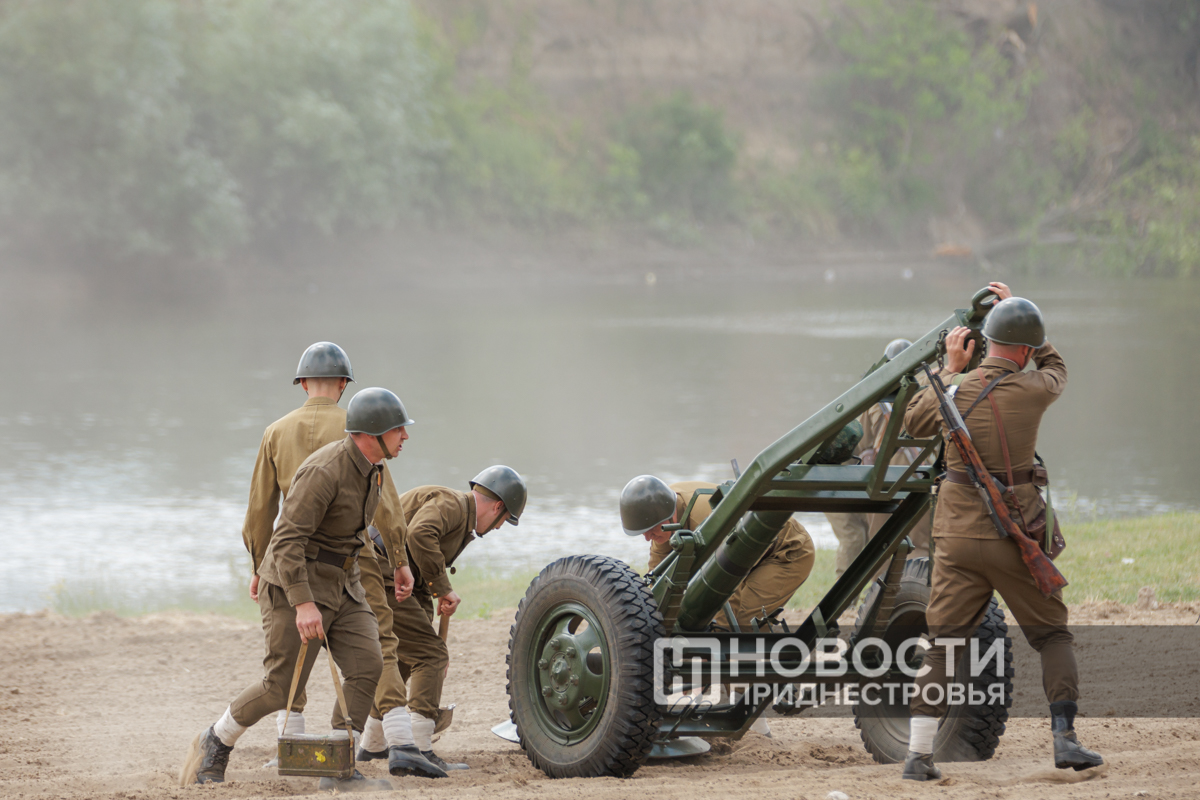
When all the forces were deployed, there was a pause. It was filled with a story about the front-line concert brigades that supported the soldiers between battles. Theaters and musical groups were a powerful means of strengthening morale. How this happened was shown by the artists of the orchestra of the PMR Armed Forces General Staff. They drove up in a GAZ-AA vehicle, known as a "lorry" - the truck received its name due to its load capacity of 1.5 tons. The fighters surrounded the vehicle, and the legendary Katyusha began to play - a song which part in achieving victory was no less than that of the Soviet armored forces. It filled hearts with fortitude and faith.
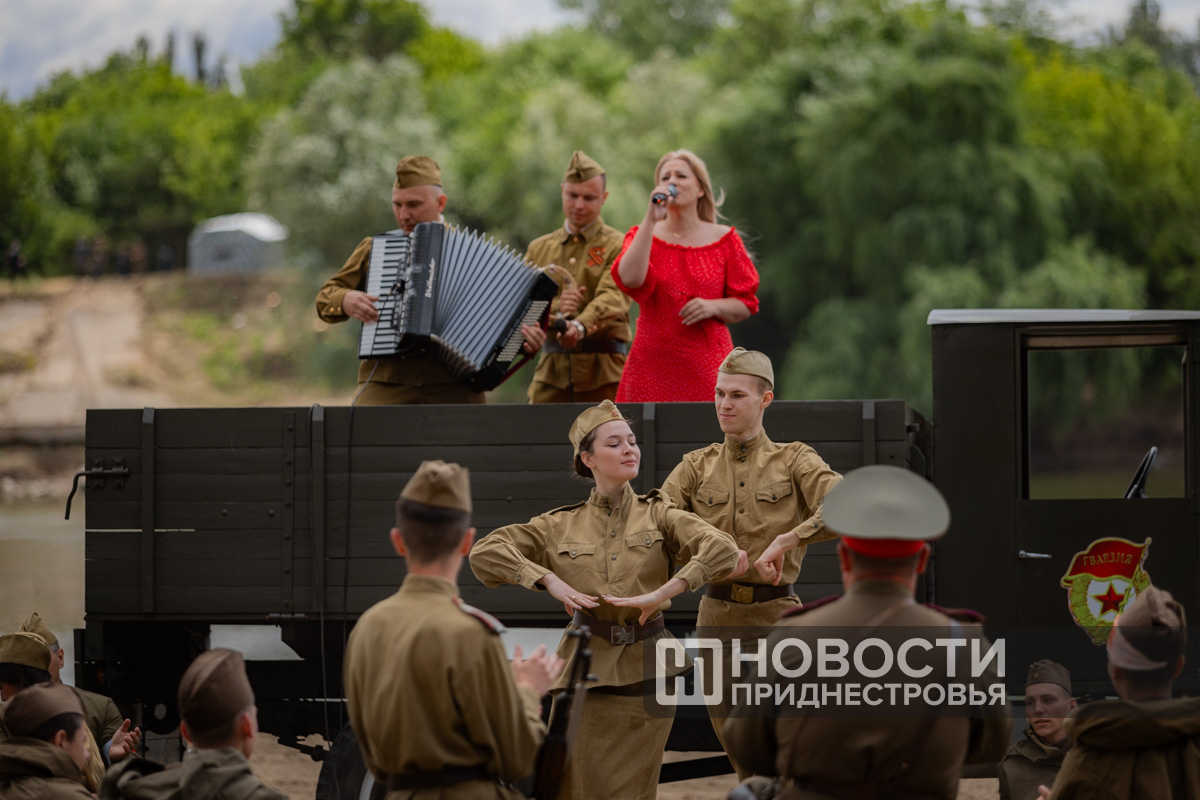
The second episode was dedicated to the capture of the Kitskany bridgehead in the spring of 1944. Viewers saw the crossing of the river: Soviet troops sailed across the Dniester in boats under enemy fire. The rowers had to work their oars with all their might to get out of the fire as quickly as possible. Meanwhile, other soldiers had to shoot back, which was, to put it mildly, not easy in the conditions of pitching and exploding mines around. At the same time, enemy infantry was waiting on the other bank, which they had to clash hand-to-hand with.
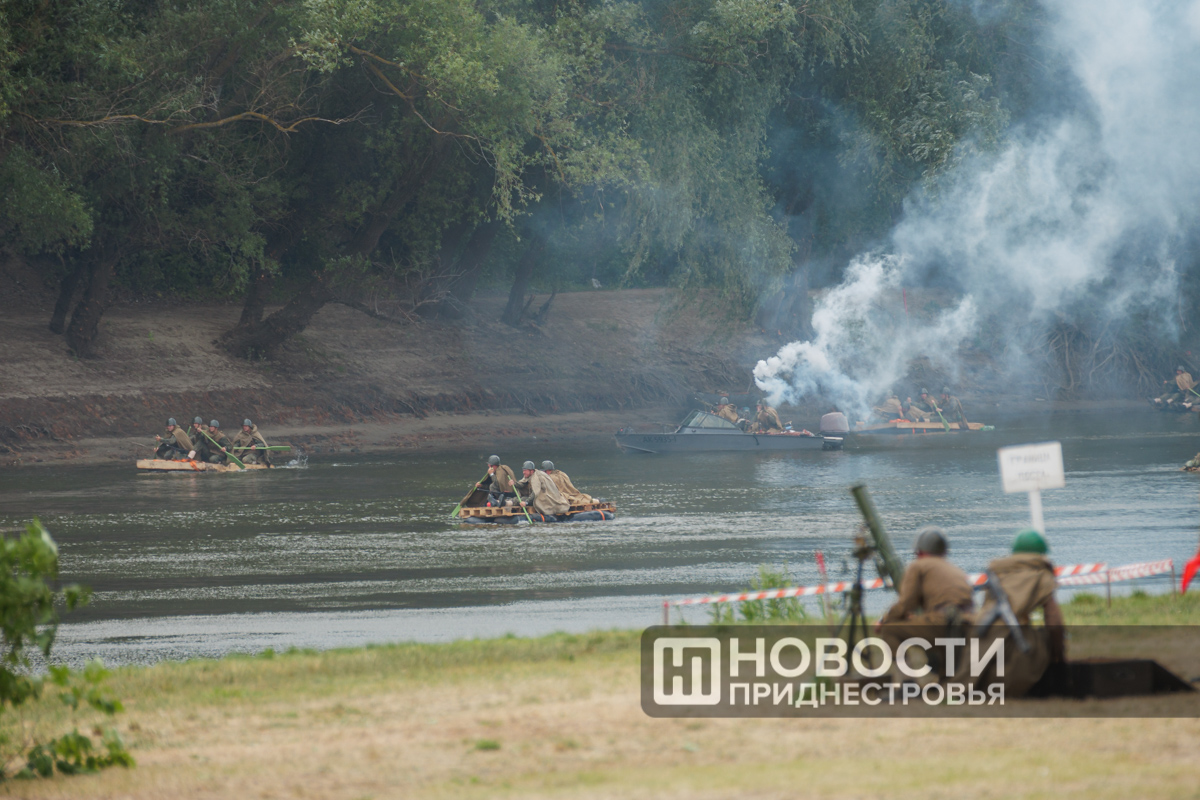
Soviet soldiers` heroism allowed them to capture the bridgehead, which played a decisive role in the Jassy-Chisinau operation. It was carried out in August 1944. The 2nd and 3rd Ukrainian Fronts of the Red Army dealt a powerful blow to the group of fascist Germany and its ally Romania. The Soviet troops` offensive began with a powerful cannonade. "Target 100 to 200! High-explosive fragmentation mine! Fragmentation fuse! Second charge!" - the commands were heard over the radio.
"First ready! Second ready!" - the gun crews responded.
"Fire!" - the command sounded, and volleys of guns and mortars thundered over the river.
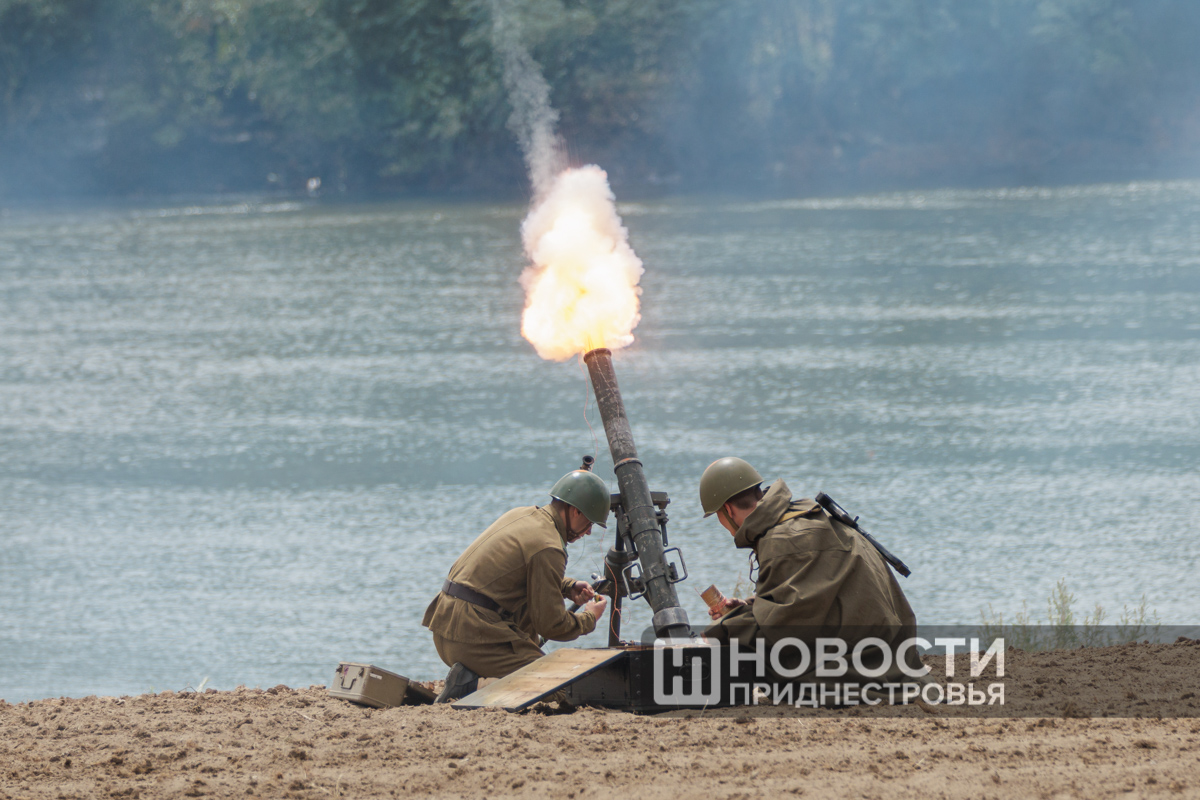
The spectators of the performance were able to fully feel the power of artillery systems - thunder rolled in the Dniester valley, like the wrath of the gods from ancient mythology. They were joined by the T-34-85 tank, which played a key role in the victory - the mass production of these armored vehicles, distinguished by maneuverability, rate of fire and reliability, helped turn the tide of the war.
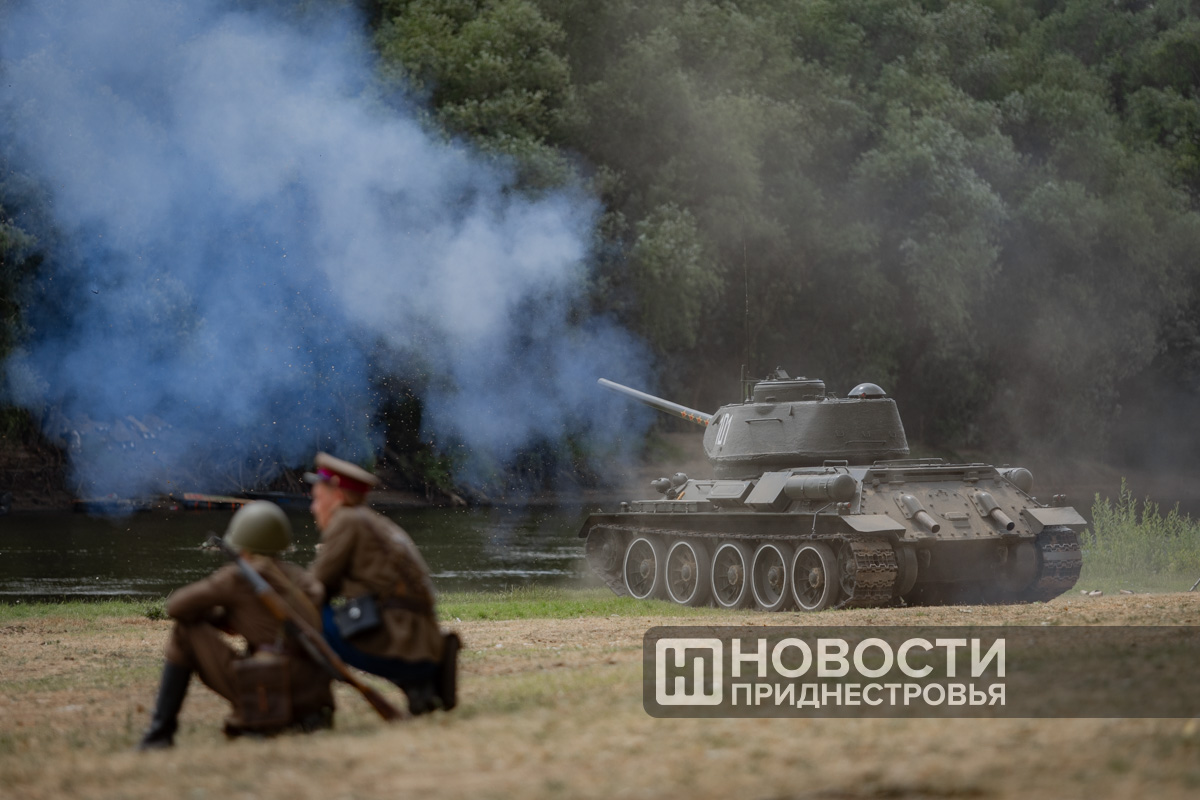
It was on such a tank that Hero of the Soviet Union, Vladimir Bochkovsky, a native of Tiraspol, fought. The reconstruction only involved one T-34-85, but even that was enough to admire the power of this combat vehicle. The tank fired directly at enemy positions, supporting the attack of the Soviet infantry, which managed to cross to the other bank, but lay down in front of the height occupied by the enemy.
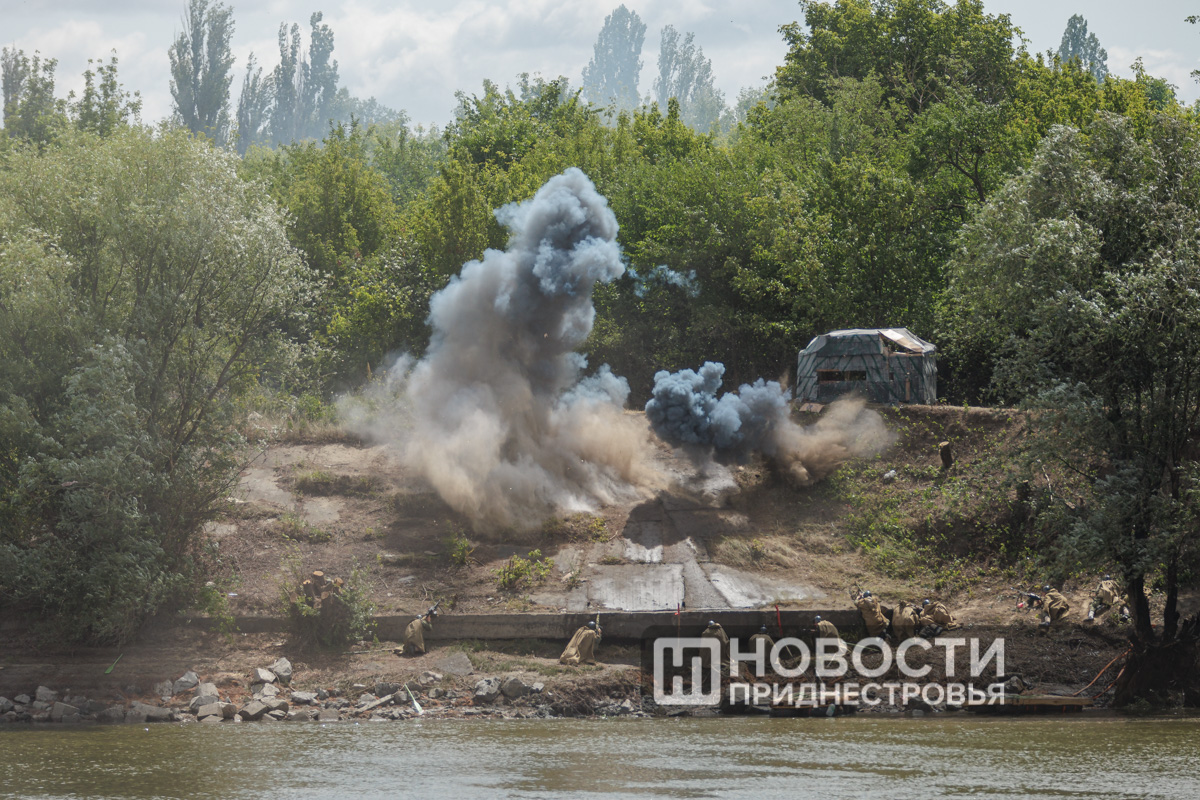
The BM-13 Katyusha multiple launch rocket system was also in operation. Its use was extremely effective at the moment of attack on enemy concentrations.
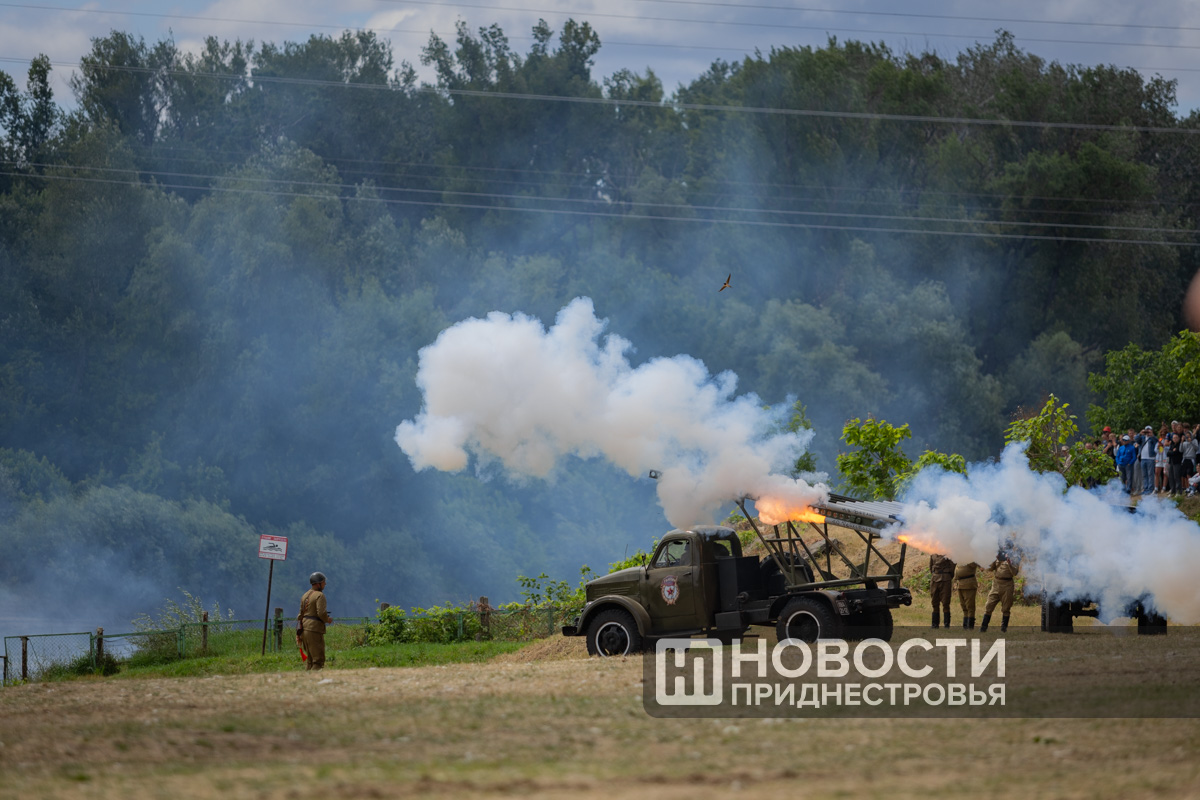
Of course, the reconstruction only imitated the T-34-85 and Katyusha. But the use of pyrotechnics enhanced the immersive experience: mock-ups of enemy positions were installed on the other bank, and at the moment of the shot, explosions were heard around them, and thick smoke enveloped the bank. Ultimately, the dummies, imitating the fascist fortifications, blew up.
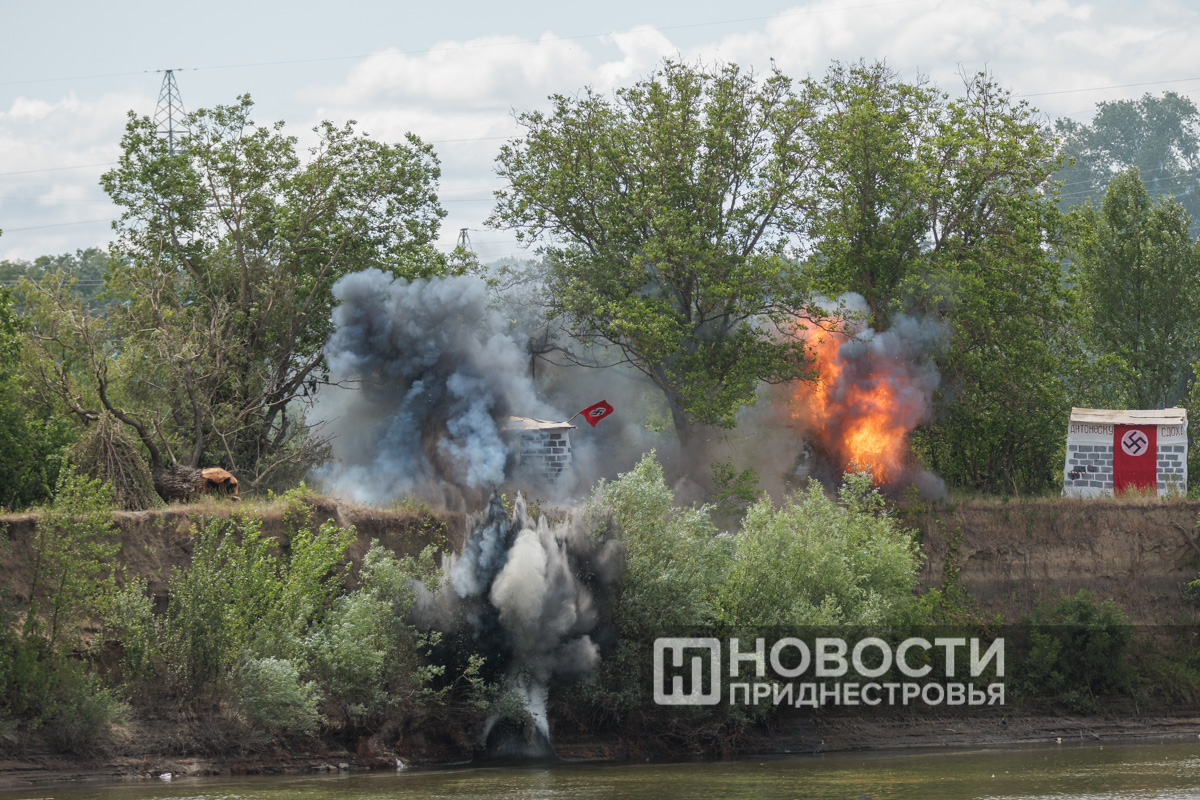
The battle episodes echoed the stories of war heroes. The legendary Stalingrad sniper Vasily Zaitsev fought at the Sherpeny bridgehead, which was located upstream of the Dniester, opposite the Pridnestrovian village of Butor, in May 1944. By that time, he was already a mortar platoon commander – in one of the battles, he almost lost his sight, and had to part with his rifle. A separate episode was dedicated to the Soviet ace – Pridnestrovian Semyon Kharkhalup, a mentor to such famous pilots as Grigory Rechkalov and Alexander Pokryshkin. He fought in the sky from the first day of the war and managed to carry out an aerial ramming: in one of the battles, the machine guns jammed, while Kharkhalup directed the plane straight at the enemy bomber. Both were seriously damaged, but the enemy did not reach the target and did not drop bombs on the heads of our soldiers. Kharkhalup died on the ninth day of the war near the village of Konstantinovka in the Kamenka District. The episode with the crash of his plane was shown in the reconstruction: residents of the village and his mother run up to the burning car - the pilot came from these places.
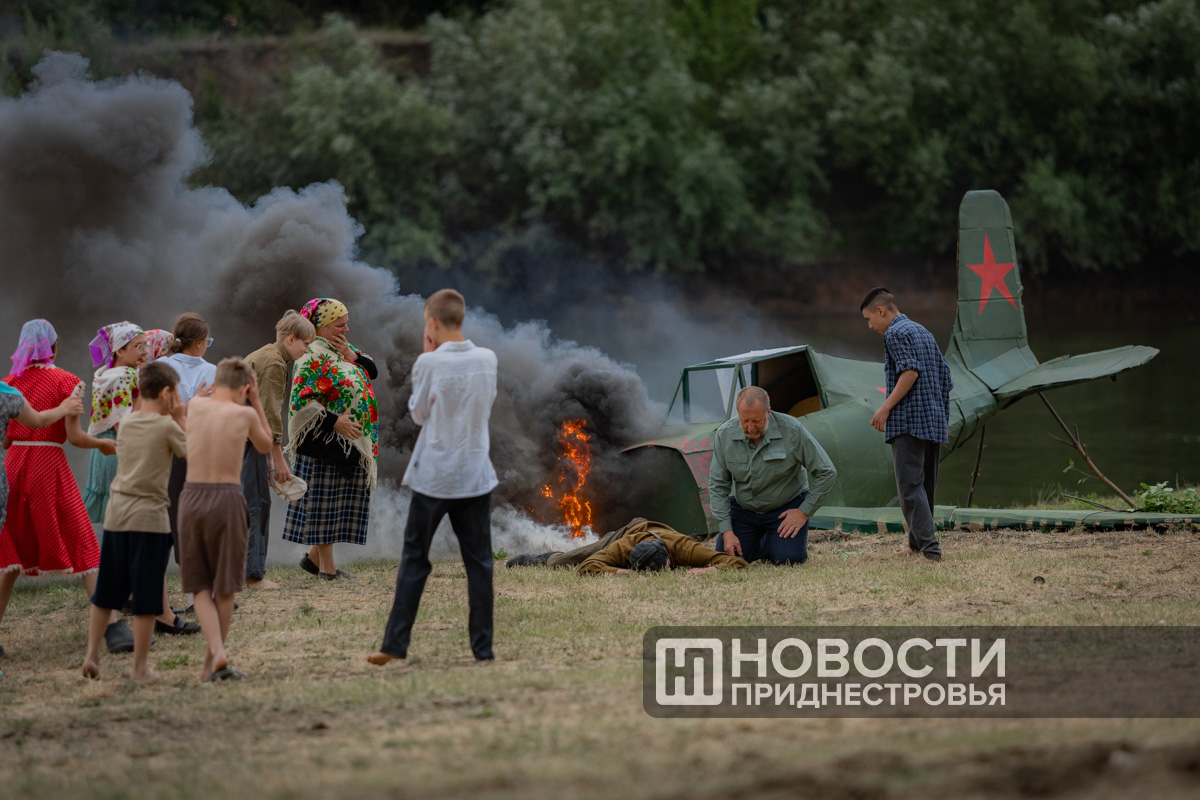
The final act of the performance was the transfer of a copy of the Victory Banner to the younger generation. The T-34-85 tank with a red flag drove through the improvised battlefield.

This transition seemed to symbolize the intersection of space and time - from the other end of the field, a modern reconnaissance armored car was moving towards the combat vehicle, with a young army member, pupil of Suvorov Military College and cadet on it. The tanker handed them the Victory Banner with a covenant to preserve the memory of the feat of their ancestors. To the song “From the Heroes of Bygone Times” performed by the Ministry of Defense orchestra, the youth took away with them a relic symbolizing the victory over fascism.
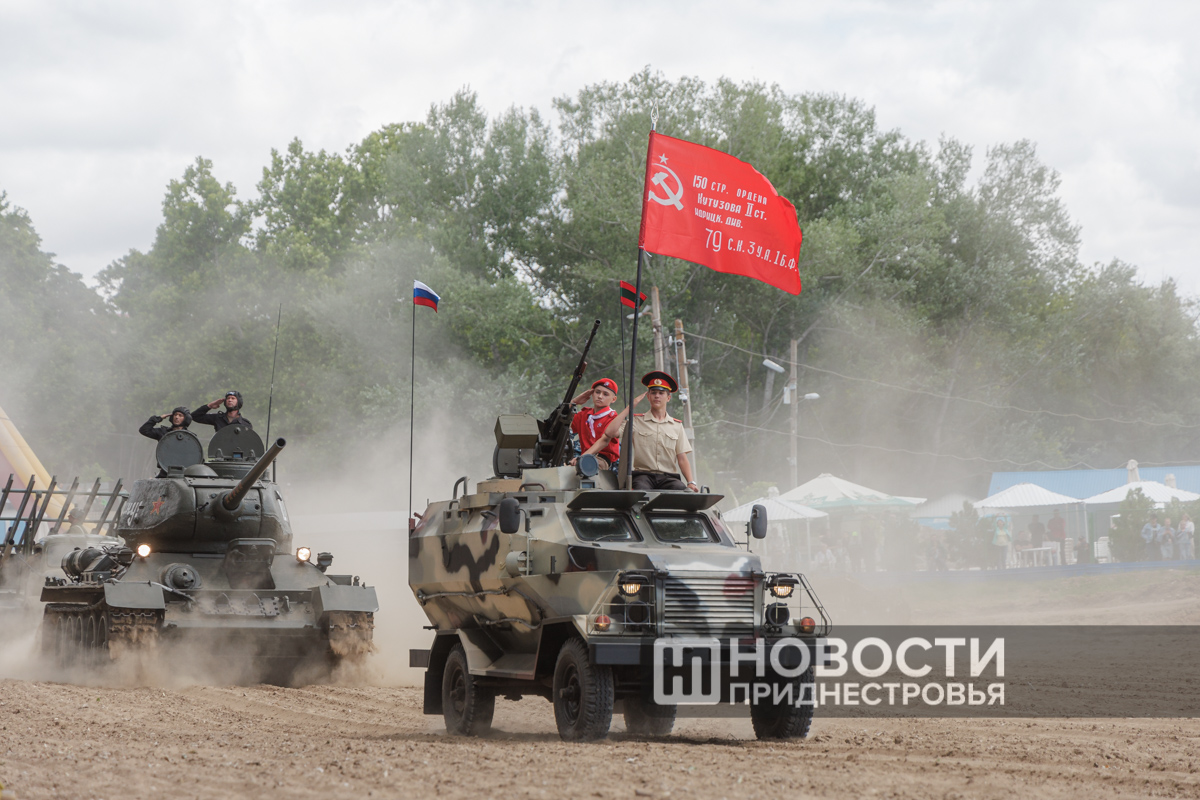
The parade of reconstruction participants was accompanied by applause from the audience, who sang along to the composition "Victory Day" that was playing at that moment.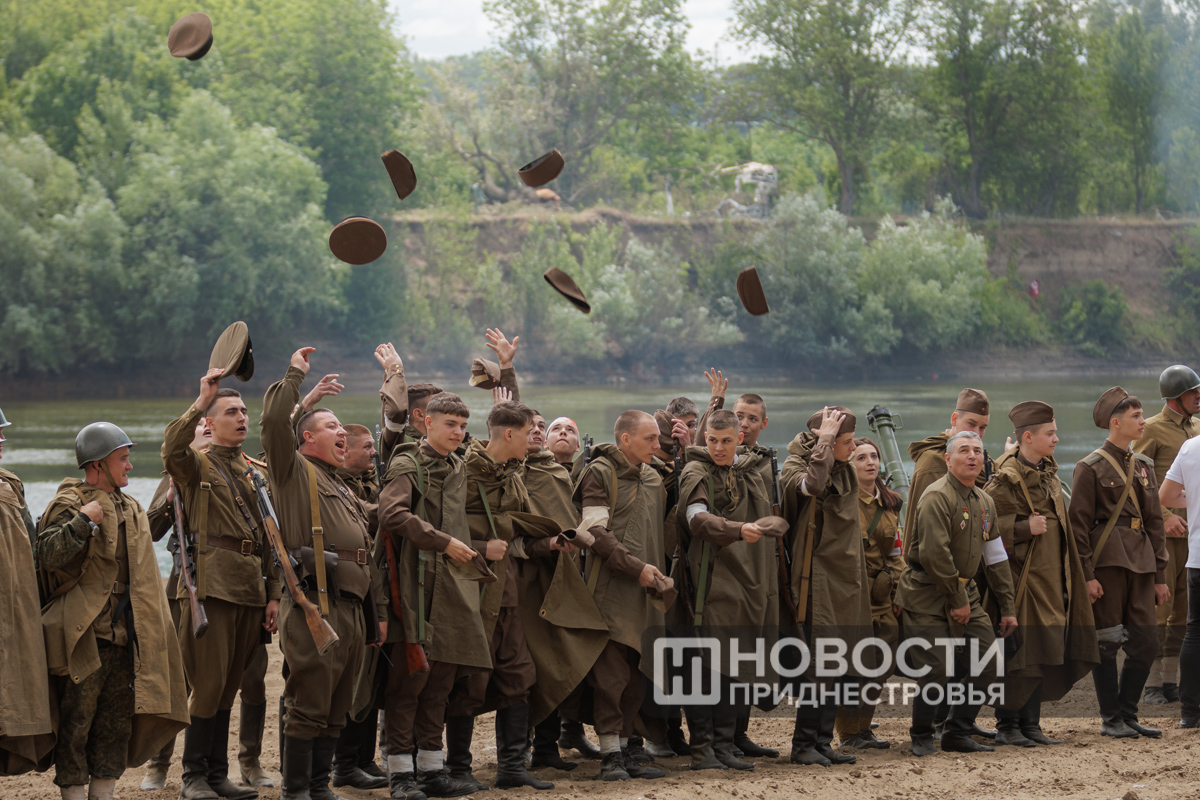
The President of the PMR Vadim Krasnoselsky and his family watched the military-historical reconstruction. He approached the participants of the production and expressed gratitude for the good organization of the production.
"There were a lot of civilians. I saw, for example, a doctor from Bendery, who is already over 55, I saw young people, I saw enthusiasts who want not only to remember history, but to make their contribution. People want to know their history and the feat of their ancestors," Vadim Krasnoselsky said, communicating with representatives of the press.
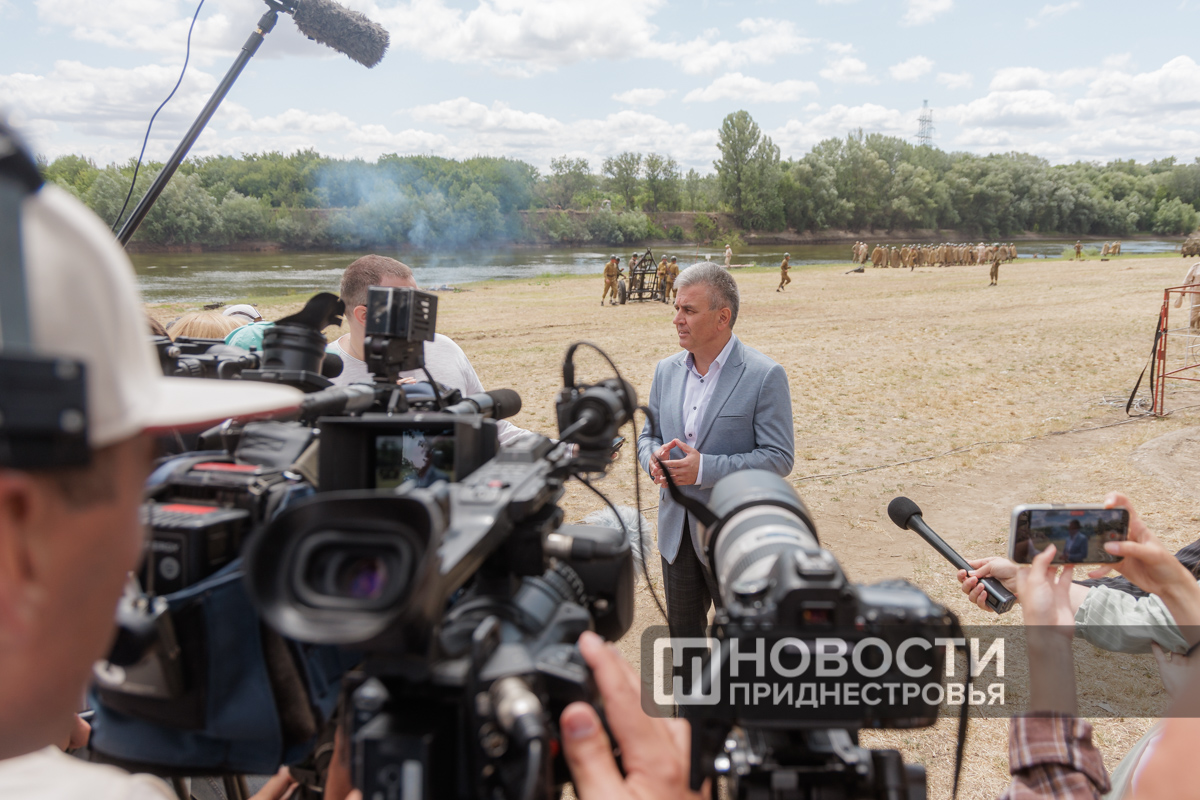
He recalled that it was as a result of the Jassy-Chisinau operation that part of the Moldavian SSR and Romania were liberated from fascism, which then went over to the side of the anti-Hitler coalition. The success of the offensive through the Kitskany bridgehead allowed the Red Army to reach the Balkans and deprive Germany of Romanian oil, which the armored forces of the Wehrmacht desperately needed.
The spectators of the reconstruction noted that the performance turned out to be large-scale in its form and energetically powerful in its content.
"We need to honor the memory of the dead, the younger generation must understand at what price the victory over fascism was achieved," Tiraspol resident Vlada Romanova shared her thoughts.
"History teaches us wisdom, passes on to us the experience of generations. But without memory, we will not be able to use this gift. Events like today allow us to think about the importance of preserving memory," Andrey Karaush, who also watched the historical reconstruction, shared his impressions.
Alexander Koretsky
